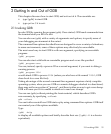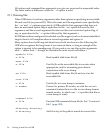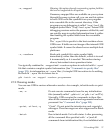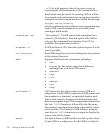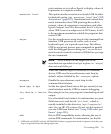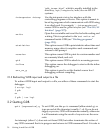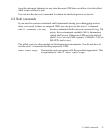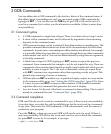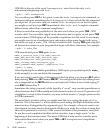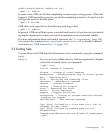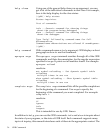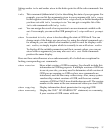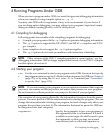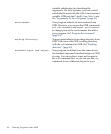
3 GDB Commands
You can abbreviate a GDB command to the first few letters of the command name, if
that abbreviation is unambiguous; and you can repeat certain GDB commands by
typing just RET ). You can also use the TAB key to get GDB to fill out the rest of a
word in a command (or to show you the alternatives available, if there is more than
one possibility).
3.1 Command syntax
• A GDB command is a single line of input. There is no limit on how long it can be.
• It starts with a command name, and is followed by arguments whose meaning
depends on the command name.
• GDB command names can be truncated if that abbreviation is unambiguous. The
possible command abbreviations are listed in the documentation for individual
commands. In some cases, even ambiguous abbreviations are allowed; for example,
s is specially defined as equivalent to step even though there are other commands
whose names start with s. You can test abbreviations by using them as arguments
to the help command.
• A blank line as input to GDB (typing just RET) means to repeat the previous
command. Some commands (for example, run) do not repeat this way. These are
commands whose unintentional repetition might cause trouble and which you are
unlikely to want to repeat. The list and x commands, when you repeat them
with RET, construct new arguments rather than repeating exactly as typed. This
permits easy scanning of source or memory.
• GDB can also use RET in another way: to partition lengthy output, in a way similar
to the common utility more (see “Setting the GDB Screen Size” (page 283)). Since
it is easy to press one RET too many in this situation, GDB disables command
repetition after any command that generates this sort of display.
• Any text from a # to the end of the line is a comment; it does nothing. This is useful
mainly in command files (see “Command files” (page 289)).
3.2 Command completion
GDB can fill in the rest of a word in a command for you, if there is only one possibility;
it can also show you what the valid possibilities are for the next word in a command,
at any time. This works for GDB commands, GDB subcommands, and the names of
symbols in your program.
Press the TAB key whenever you want GDB to fill out the rest of a word. If there is
only one possibility, GDB fills in the word, and waits for you to finish the command
(or press RET to enter it). For example, if you type
((gdb)) info bre TAB
3.1 Command syntax 33



